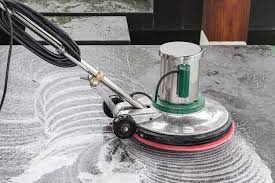Marble's veins and patterns require a delicate touch to maintain its brilliant shine. You may have been mesmerized at the luminous shine of a marble floor, a smoothness that resembles liquid. This is the magic of marble polishing. It's a time-tested process that goes beyond simple maintenance and transforms plain rock into an experience like walking on water.

Let's get into the gritty details of marble polishing. Understanding the nature of marble, is essential to begin with. Marble is a metamorphic rock, primarily calcium carbonate. It is also softer than expected. Its softness means that it is susceptible to scratches, etching or loss of shine due to foot traffic, spills and other factors. The trick is to restore its luster while not damaging the delicate surface.
Cleaning thoroughly is the first step to polishing marble. Imagine stepping on dusty chalk. Even footsteps can leave marks. Cleaning is done using pH-neutral products, which won't react to the marble. Acidic or very alkaline products are not recommended as they may etch the marble's surface.
The real transformation starts next - polishing. You can choose between two methods: diamond abrasive or powder polishing. Powder polishing is a process that involves buffing a fine compound into the marble. This creates a shiny, reflective surface. This is similar to sprinkle fairy dust, which turns into a magical finish. Diamond abrasive pad can also be used to remove imperfections, revealing the beauty underneath.
Detailing is done by focusing on edges, corners and difficult-to-reach areas. Each marble piece is treated as a portrait with the use of specialized tools. This includes even the finest frame edges. Each stroke and polish is important in shaping the overall aesthetic.
Maintenance is important and should not be overlooked. Regular maintenance will prevent major renovations and prolong the life of your marble. Daily dust mopping with a soft cloth is recommended. Weekly wiping with a suitable cleanser will keep harsh chemicals away while maintaining the integrity of the surface. Professionals may recommend sealing marble on a regular basis for those who walk on it frequently. It is like a shield that protects the marble from stains or scratches caused by accidental spills and abrasive dust.
In the world of marble crafts, you may hear about ancient methods that involved homemade baking powder concoctions. Modern methods have refined this process to near perfection. Imagine turning a centuries old marble floor that has been tarnished into a masterpiece Mozart may have walked on. It's not only the transformation that brings satisfaction, but also the journey to get there.
The art of marble polishing requires precision, patience and an old-world charm. Each marble piece has a unique story. The swirls and colors are echoes of stories from deep in the earth. It is a pleasure and an honor to bring these stories into the light through skilled hands. Marble polishing makes the stone sing, like coaxing wood to smile or cold stone to laugh.

